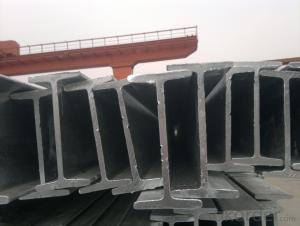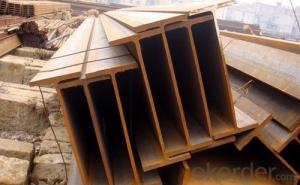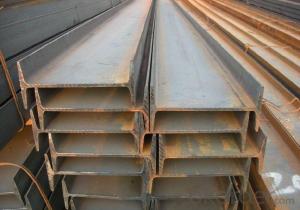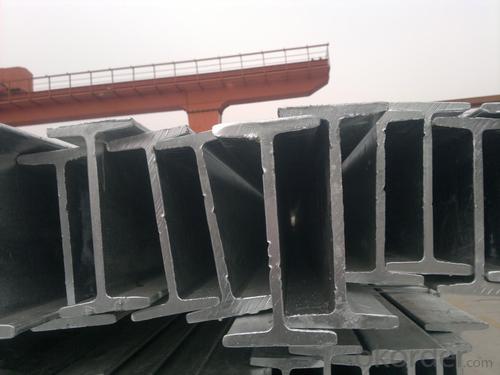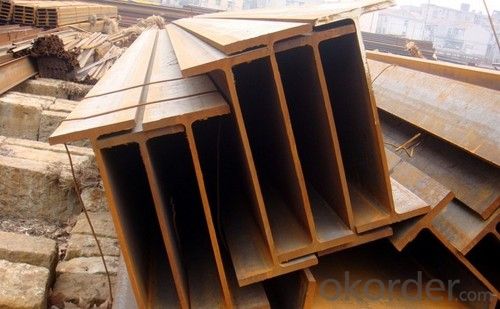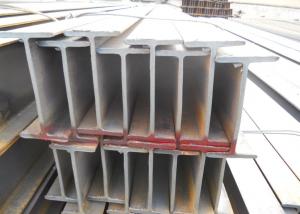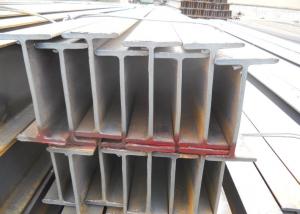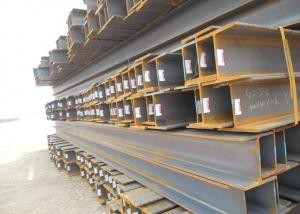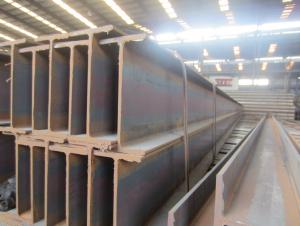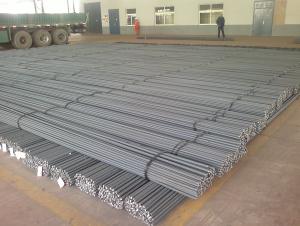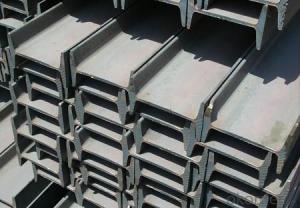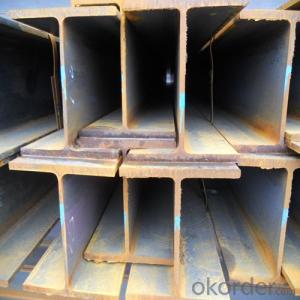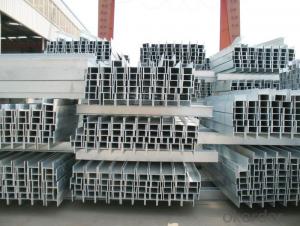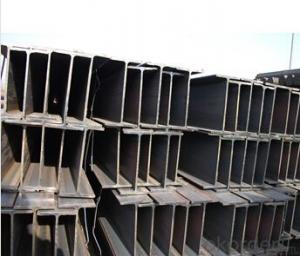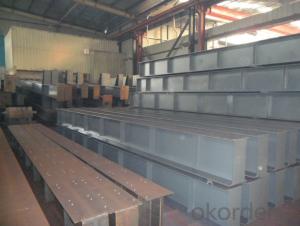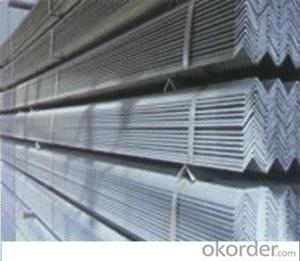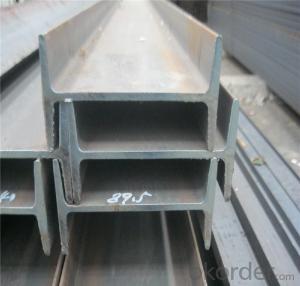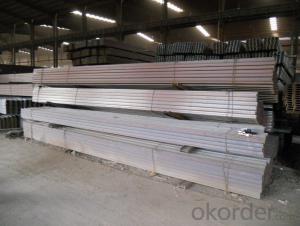Middle steel H BEAM for construction GB Q235B
- Loading Port:
- Tianjin
- Payment Terms:
- TT or LC
- Min Order Qty:
- 25 m.t
- Supply Capability:
- 100000 m.t/month
OKorder Service Pledge
OKorder Financial Service
You Might Also Like
Product Description:
OKorder is offering Middle steel H BEAM for construction GB Q235B at great prices with worldwide shipping. Our supplier is a world-class manufacturer of steel, with our products utilized the world over. OKorder annually supplies products to European, North American and Asian markets. We provide quotations within 24 hours of receiving an inquiry and guarantee competitive prices.
Product Applications:
Middle steel H BEAM are ideal for structural applications and are widely used in the construction of buildings and bridges, and the manufacturing, petrochemical, and transportation industries.
Product Advantages:
OKorder's steel H BEAM are durable, strong, and resist corrosion.
Main Product Features:
· Premium quality
· Prompt delivery & seaworthy packing (30 days after receiving deposit)
· Corrosion resistance
· Can be recycled and reused
· Mill test certification
· Professional Service
· Competitive pricing
Product Specifications:
1. Standard: JIS G3101
2. Grade: SS400 or Equivalent
3. Length: 6m,10m, 12m as following table
4. Invoicing on theoretical weight or actual weight as customer request
5.Payment: TT or L/C
6. Sizes:
SIZE(mm) | DIMENSION(kg/m) |
100*100 | 16.9 |
125*125 | 23.6 |
150*75 | 14 |
150*150 | 31.1 |
148*100 | 20.7 |
198*99 | 17.8 |
200*100 | 20.9 |
248*124 | 25.1 |
250*125 | 29 |
300*150 | 36.7 |
298*149 | 32 |
200*200 | 49.9 |
294*200 | 55.8 |
346*174 | 41.2 |
350*175 | 49.4 |
244*175 | 43.6 |
175*175 | 40.4 |
294*200 | 55.8 |
298*201 | 64.4 |
346*174 | 41.2 |
350*175 | 49.4 |
400*200 | 65.4 |
396*199 | 56.1 |
450*200 | 74.9 |
446*199 | 65.1 |
340*250 | 78.1 |
500*200 | 88.1 |
300*150 | 36.7 |
Usage & Applications of Hot Rolled H-Beam Steel
Commercial building structure ;Pre-engineered buildings; Machinery support structure; Prefabricated structure; Medium scale bridges; Ship-building structure. etc.
Packaging & Delivery of Hot Rolled H-Beam Steel
1. Packing: it is nude packed in bundles by steel wire rod
2. Bundle weight: not more than 3.5MT for bulk vessel; less than 3 MT for container load
3. Marks:
Color marking: There will be color marking on both end of the bundle for the cargo delivered by bulk vessel. That makes it easily to distinguish at the destination port.
Tag mark: there will be tag mark tied up on the bundles. The information usually including supplier logo and name, product name, made in China, shipping marks and other information request by the customer.
If loading by container the marking is not needed, but we will prepare it as customer request.
4. Transportation: the goods are delivered by truck from mill to loading port, the maximum quantity can be loaded is around 40MTs by each truck. If the order quantity cannot reach the full truck loaded, the transportation cost per ton will be little higher than full load.
5. Delivered by container or bulk vessel
FAQ:
Q1: Why buy Materials & Equipment from OKorder.com?
A1: All products offered byOKorder.com are carefully selected from China's most reliable manufacturing enterprises. Through its ISO certifications, OKorder.com adheres to the highest standards and a commitment to supply chain safety and customer satisfaction.
Q2: How do we guarantee the quality of our products?
A2: We have established an advanced quality management system which conducts strict quality tests at every step, from raw materials to the final product. At the same time, we provide extensive follow-up service assurances as required.
Images:
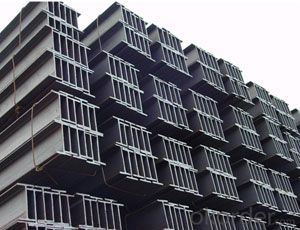

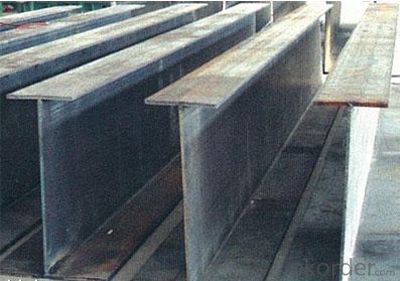
- Q: How do you calculate the maximum bending stress in steel H-beams?
- To calculate the maximum bending stress in steel H-beams, several factors need to be considered. Firstly, it is important to determine the maximum bending moment that the H-beam will experience. This can be done by analyzing the loads applied to the beam, such as dead loads (the weight of the structure itself) and live loads (any additional weight placed on the beam). By calculating the reactions at the supports and summing the moments at any given section of the beam, the maximum bending moment can be determined. Next, the section modulus of the H-beam needs to be calculated. The section modulus is a geometric property of the cross-section of the beam and indicates the beam's resistance to bending. It can be calculated by dividing the moment of inertia of the cross-section by the distance from the centroid of the cross-section to the extreme fiber. The moment of inertia can be found in standard engineering references or by using software programs. Finally, the maximum bending stress can be calculated using the formula σ = M / S, where σ is the maximum bending stress, M is the maximum bending moment, and S is the section modulus. This formula relates the applied moment to the stress induced in the beam. It is important to note that the calculation of the maximum bending stress in steel H-beams requires accurate input data, such as the correct values for loads, beam dimensions, and material properties. Additionally, the design code or standard being followed should be consulted for any specific requirements or factors to be considered.
- Q: Are steel H-beams suitable for use in the construction of residential houses?
- Yes, steel H-beams are suitable for use in the construction of residential houses. Steel H-beams are widely used in the construction industry for their strength, durability, and structural integrity. They provide excellent load-bearing capacity, making them ideal for supporting the weight of residential structures. Additionally, steel H-beams are versatile and can be easily customized to fit different architectural designs and building requirements. They are also fire-resistant, insect-resistant, and resistant to rot and decay, making them a reliable and long-lasting choice for residential construction. Moreover, steel H-beams are cost-effective, as they require minimal maintenance and have a longer lifespan compared to other building materials. Overall, steel H-beams are a suitable and popular choice for constructing residential houses due to their strength, durability, versatility, and cost-effectiveness.
- Q: What is the maximum allowable camber for steel H-beams?
- The maximum allowable camber for steel H-beams is typically specified by the relevant industry standards or project specifications. The specific maximum allowable camber can vary depending on the size, grade, and intended use of the H-beam. It is important to consult these standards or specifications to determine the maximum allowable camber for a specific steel H-beam.
- Q: What are the common challenges faced during the installation of steel H-beams?
- Several challenges may arise during the installation of steel H-beams. These challenges encompass the following: 1. Weight and size: The large and heavy nature of steel H-beams makes their handling and maneuvering during installation difficult. The transportation and positioning of these beams can prove challenging due to their weight and size. 2. Alignment: Ensuring proper alignment of H-beams is crucial for structural integrity. Achieving perfect vertical and horizontal alignment, particularly when dealing with multiple beams or long spans, can be challenging. 3. Connection methods: Securely connecting H-beams to other structural elements, such as columns or foundations, presents a challenge. The selection of an appropriate connection method and ensuring its proper execution require specialized knowledge and expertise. 4. Crane and equipment limitations: The installation of steel H-beams often necessitates the use of cranes and other heavy equipment. However, these machines have limitations in terms of lifting capacity, reach, and access to the construction site. Overcoming these limitations, especially in tight or congested areas, can be challenging. 5. Safety considerations: The installation of steel H-beams involves working at heights and handling heavy materials, thus raising safety concerns for the workers involved. Mitigating these risks necessitates the implementation of proper safety measures, such as fall protection, correct lifting techniques, and comprehensive training. 6. Site conditions: The condition of the construction site can also present challenges during the installation of steel H-beams. Uneven or unstable ground, restricted access, and adverse weather conditions can all affect the installation process, requiring additional planning and precautions. To overcome these challenges, it is crucial to have a well-coordinated plan, skilled personnel, and appropriate equipment. Engaging experienced professionals and facilitating effective communication among all parties involved can help address these challenges and ensure a successful installation of steel H-beams.
- Q: How do steel H-beams perform in areas with high humidity?
- Steel H-beams are renowned for their remarkable strength and durability, making them a favored option for diverse construction projects. In terms of regions with elevated humidity levels, steel H-beams exhibit exceptional performance. One of the primary merits of steel lies in its ability to resist moisture and corrosion. Usually, steel H-beams are coated with protective finishes or galvanized to enhance their resistance against rust and corrosion. These coatings function as a barrier, preventing moisture from infiltrating the beam's surface and causing harm. High humidity can result in the accumulation of moisture in the atmosphere, which may potentially inflict structural damage on specific materials. However, steel H-beams are immune to this issue. Their sturdy construction and corrosion-resistant coatings ensure their ability to withstand the challenges posed by humid environments. Furthermore, steel H-beams possess excellent load-bearing capabilities, which are vital for areas characterized by high humidity. Moisture in the atmosphere can sometimes weaken certain materials, compromising their structural integrity. Nonetheless, steel H-beams retain their strength and stability, even in humid conditions. It is important to note that regular maintenance and inspections are still necessary to ensure the long-term performance of steel H-beams in high humidity areas. This includes conducting routine checks for any signs of corrosion or damage to the protective coatings. By promptly addressing any emerging issues, the lifespan and performance of the steel H-beams can be maximized. In conclusion, steel H-beams are a dependable choice for areas with high humidity due to their resistance to moisture, corrosion, and their excellent load-bearing capabilities. With proper maintenance, these beams can provide enduring structural support, even in challenging environmental conditions.
- Q: Are steel H-beams cost-effective compared to other beam options?
- Yes, steel H-beams are generally considered cost-effective compared to other beam options. This is due to their high strength-to-weight ratio, which allows for longer spans and reduced material requirements, leading to lower overall costs. Additionally, steel H-beams have excellent load-bearing capacity, durability, and resistance to fire and corrosion, further enhancing their cost-effectiveness.
- Q: Can steel H-beams be used for swimming pool construction?
- Certainly, swimming pool construction can indeed involve the utilization of steel H-beams. These beams possess exceptional strength and durability, rendering them highly appropriate for effectively bearing the weight and pressure exerted by the pool's structure. They can be employed to establish the framework and support system required for the walls and floors of the swimming pool. Furthermore, the corrosion resistance of steel H-beams is a crucial factor in ensuring the pool's longevity and upkeep. Nevertheless, it is imperative to seek guidance from a professional engineer or contractor to guarantee that the steel H-beams are meticulously designed and installed in accordance with the precise prerequisites and regulations governing swimming pool construction.
- Q: What are the considerations for selecting the appropriate spacing of steel H-beams?
- There are several considerations to take into account when selecting the appropriate spacing of steel H-beams. Firstly, the load-bearing capacity of the beams needs to be considered. The spacing should be chosen in such a way that it can adequately support the anticipated load without any deflection or bending. This requires understanding the weight and distribution of the load, as well as the strength and stiffness of the beams. Secondly, the span of the beams plays a crucial role in determining the spacing. Longer spans generally require closer spacing to ensure structural integrity and prevent sagging. Shorter spans, on the other hand, may allow for wider spacing depending on the load and type of construction. Another factor to consider is the type of construction or application. Different structures have different requirements, and the spacing of H-beams should be chosen accordingly. For example, in a bridge construction, the spacing may be determined by the width of the road or railway track it needs to support. Additionally, the material properties of steel, such as its yield strength and modulus of elasticity, should be considered. These properties affect the ability of the beams to resist deformation and stress under load. By understanding these properties, engineers can determine the appropriate spacing to ensure the beams perform optimally. Lastly, cost and efficiency are important considerations. While closer spacing may provide better load-bearing capacity, it may also result in higher material and construction costs. Therefore, a balance needs to be struck between structural requirements and economic feasibility. In conclusion, selecting the appropriate spacing of steel H-beams requires careful consideration of load-bearing capacity, span, type of construction, material properties, and cost-efficiency. By taking these factors into account, engineers can ensure the structural integrity and performance of the beams in various applications.
- Q: Can steel H-beams be used in airport construction?
- Yes, steel H-beams can be used in airport construction. They are commonly used to provide structural support in the construction of airport terminals, hangars, and other airport facilities due to their strength, durability, and versatility.
- Q: How are steel H-beams protected against rust and corrosion?
- Steel H-beams are protected against rust and corrosion through various methods such as hot-dip galvanizing, epoxy coatings, or painting. These protective measures create a barrier between the steel surface and the surrounding environment, preventing moisture and oxygen from coming into contact with the metal and causing corrosion.
Send your message to us
Middle steel H BEAM for construction GB Q235B
- Loading Port:
- Tianjin
- Payment Terms:
- TT or LC
- Min Order Qty:
- 25 m.t
- Supply Capability:
- 100000 m.t/month
OKorder Service Pledge
OKorder Financial Service
Similar products
Hot products
Hot Searches
Related keywords
